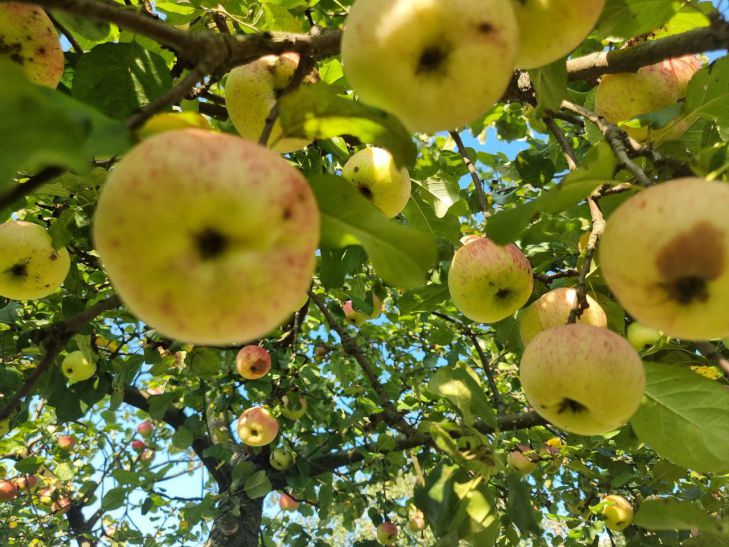Have you noticed that some apple trees are bursting with fruit, while others are withering away as if cursed?
The secret isn't in magic fertilizers or genetic engineering. It's much simpler: while you throw banana peels in the trash, smart gardeners bury them under trees.
And this is not superstition, but a well-founded method that turns the idea of fertilizing upside down. Are you ready to find out how a tropical fruit saves apple trees?

Banana peel contains a record amount of potassium, an element responsible for the formation of sugars in fruits and frost resistance of trees. But that's not all. It contains magnesium, phosphorus and calcium, the three whales on which the health of an apple tree rests.
When the peel decomposes in the soil, it acts as a slow-release preparation: nutrients are gradually delivered to the roots, eliminating the risk of overdose. For example, potassium strengthens cell walls, making leaves resistant to scab, and magnesium speeds up photosynthesis even in cloudy summers.
But there is a catch. Fresh peel attracts wasps, ants and rodents, which damage the bark. To avoid this, you need to prepare it. Cut the peel into strips and dry it in the oven at 50 ° C until it becomes brittle. This will kill bacteria and deprive the pests of interest.
How to bury the peel correctly? The depth of the burying is the key point. If you bury the peel too close to the surface (5-10 cm), it will become prey for birds or will be washed away by rain.
The best option is 15–20 cm deep into the soil, in the active root zone. Step back 50–70 cm from the trunk so as not to damage large roots. Make holes along the perimeter of the crown – this is where the young suction roots are located.
The time of year also plays a role. Autumn planting (September-October) allows the peel to begin decomposing before frost, and in the spring the tree will get a strong start. For young apple trees, use the peel of 3-4 bananas, for adults - 7-8. Do not overdo it: excess potassium blocks the absorption of nitrogen, which leads to yellowing of the leaves.
What happens to the soil after "banana therapy"?
Banana peel is not just a fertilizer. It changes the structure of the soil, making it loose and breathable. This is especially important for heavy clay soils, where apple tree roots suffer from a lack of oxygen. In addition, the peel contains enzymes that suppress the growth of pathogenic fungi, such as moniliosis.
But there is a downside. The peel of industrial bananas often contains pesticides (thiabendazole, chlorpyrifos), which are used for processing during transportation. To avoid poisoning the soil, soak the peel for 30 minutes in a soda solution (1 tbsp. per 1 liter of water) before drying.
If you don’t have time to dig holes, make a banana “compote”. Grind the dry peel into powder (for example, in a coffee grinder) and mix with water (100 g per 10 l). Let it sit for a day and water the apple tree at the root. This infusion can be used even during flowering.
Another life hack is banana peels as bait for aphids. Hang them on the lower branches: the pests will switch to the peel, and you will have time to treat the tree with a soap solution.
Banana peels are not trash, but a ticket to the world of giant apples. But like any powerful tool, they require a competent approach.
Dry, bury deeply and don’t forget about moderation – then your tree will thank you with a bountiful harvest.
